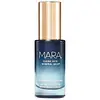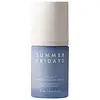What's inside
What's inside
 Key Ingredients
Key Ingredients

 Benefits
Benefits

 Concerns
Concerns

 Ingredients Side-by-side
Ingredients Side-by-side

Salicylic Acid 2%
MaskingWater
Skin ConditioningSimmondsia Chinensis Seed Oil
EmollientC13-15 Alkane
SolventVitis Vinifera Seed Oil
EmollientGlycerin
HumectantPolyglyceryl-3 Polyricinoleate
EmulsifyingCaprylic/Capric Triglyceride
MaskingNiacinamide
SmoothingDisteardimonium Hectorite
StabilisingNigella Sativa Seed Oil
EmollientBakuchiol
AntimicrobialCucurbita Pepo Seed Oil
EmollientCorylus Avellana Seed Oil
EmollientCalophyllum Inophyllum Seed Oil
AntimicrobialSodium Chloride
MaskingGluconolactone
Skin ConditioningMagnesium PCA
HumectantMandelic Acid
AntimicrobialSodium Benzoate
MaskingBisabolol
MaskingHelianthus Annuus Seed Oil
EmollientLaminaria Hyperborea Extract
Skin ProtectingZinc PCA
HumectantSodium Hydroxide
BufferingMagnesium Aspartate
Skin ConditioningZinc Gluconate
Skin ConditioningCrambe Maritima Leaf Extract
Skin ConditioningEugenia Caryophyllus Bud Extract
PerfumingFucus Vesiculosus Extract
EmollientCalcium Gluconate
HumectantPhenoxyethanol
PreservativeSalicornia Herbacea Extract
Skin ConditioningCopper Gluconate
Skin ConditioningUndaria Pinnatifida Extract
Skin ConditioningZingiber Officinale Root Extract
MaskingSodium Carbonate
BufferingSalicylic Acid 2%, Water, Simmondsia Chinensis Seed Oil, C13-15 Alkane, Vitis Vinifera Seed Oil, Glycerin, Polyglyceryl-3 Polyricinoleate, Caprylic/Capric Triglyceride, Niacinamide, Disteardimonium Hectorite, Nigella Sativa Seed Oil, Bakuchiol, Cucurbita Pepo Seed Oil, Corylus Avellana Seed Oil, Calophyllum Inophyllum Seed Oil, Sodium Chloride, Gluconolactone, Magnesium PCA, Mandelic Acid, Sodium Benzoate, Bisabolol, Helianthus Annuus Seed Oil, Laminaria Hyperborea Extract, Zinc PCA, Sodium Hydroxide, Magnesium Aspartate, Zinc Gluconate, Crambe Maritima Leaf Extract, Eugenia Caryophyllus Bud Extract, Fucus Vesiculosus Extract, Calcium Gluconate, Phenoxyethanol, Salicornia Herbacea Extract, Copper Gluconate, Undaria Pinnatifida Extract, Zingiber Officinale Root Extract, Sodium Carbonate
Water
Skin ConditioningPropanediol
SolventSqualane
EmollientGlycerin
HumectantCetyl Ethylhexanoate
EmollientAloe Barbadensis Leaf Juice
Skin ConditioningAmmonium Acryloyldimethyltaurate/Vp Copolymer
Polyester-5
Sodium Hyaluronate
HumectantAvena Sativa Kernel Flour
AbrasiveSodium PCA
HumectantPanthenol
Skin ConditioningCeramide NP
Skin ConditioningArnica Montana Flower Extract
MaskingLaminaria Digitata Extract
Skin ProtectingCentella Asiatica Extract
CleansingPalmitoyl Tripeptide-38
Skin ConditioningNiacinamide
SmoothingAcetyl Glucosamine
Skin ConditioningArginine
MaskingAspartic Acid
MaskingPCA
HumectantGlycine
BufferingAlanine
MaskingSerine
MaskingValine
MaskingProline
Skin ConditioningThreonine
Isoleucine
Skin ConditioningPhenylalanine
MaskingHistidine
HumectantSodium Lactate
BufferingCaprylhydroxamic Acid
Glyceryl Stearate
EmollientDisodium EDTA
Sodium Hydroxide
BufferingPolyglyceryl-3 Methylglucose Distearate
EmulsifyingSodium Benzoate
MaskingCitric Acid
BufferingHydroxypropyl Cyclodextrin
MaskingXanthan Gum
EmulsifyingPotassium Sorbate
Preservative1,2-Hexanediol
Skin ConditioningPropylene Glycol
HumectantWater, Propanediol, Squalane, Glycerin, Cetyl Ethylhexanoate, Aloe Barbadensis Leaf Juice, Ammonium Acryloyldimethyltaurate/Vp Copolymer, Polyester-5, Sodium Hyaluronate, Avena Sativa Kernel Flour, Sodium PCA, Panthenol, Ceramide NP, Arnica Montana Flower Extract, Laminaria Digitata Extract, Centella Asiatica Extract, Palmitoyl Tripeptide-38, Niacinamide, Acetyl Glucosamine, Arginine, Aspartic Acid, PCA, Glycine, Alanine, Serine, Valine, Proline, Threonine, Isoleucine, Phenylalanine, Histidine, Sodium Lactate, Caprylhydroxamic Acid, Glyceryl Stearate, Disodium EDTA, Sodium Hydroxide, Polyglyceryl-3 Methylglucose Distearate, Sodium Benzoate, Citric Acid, Hydroxypropyl Cyclodextrin, Xanthan Gum, Potassium Sorbate, 1,2-Hexanediol, Propylene Glycol
 Reviews
Reviews

Ingredients Explained
These ingredients are found in both products.
Ingredients higher up in an ingredient list are typically present in a larger amount.
Glycerin is already naturally found in your skin. It helps moisturize and protect your skin.
A study from 2016 found glycerin to be more effective as a humectant than AHAs and hyaluronic acid.
As a humectant, it helps the skin stay hydrated by pulling moisture to your skin. The low molecular weight of glycerin allows it to pull moisture into the deeper layers of your skin.
Hydrated skin improves your skin barrier; Your skin barrier helps protect against irritants and bacteria.
Glycerin has also been found to have antimicrobial and antiviral properties. Due to these properties, glycerin is often used in wound and burn treatments.
In cosmetics, glycerin is usually derived from plants such as soybean or palm. However, it can also be sourced from animals, such as tallow or animal fat.
This ingredient is organic, colorless, odorless, and non-toxic.
Glycerin is the name for this ingredient in American English. British English uses Glycerol/Glycerine.
Learn more about GlycerinNiacinamide is a multitasking form of vitamin B3 that strengthens the skin barrier, reduces pores and dark spots, regulates oil, and improves signs of aging.
And the best part? It's gentle and well-tolerated by most skin types, including sensitive and reactive skin.
You might have heard of "niacin flush", or the reddening of skin that causes itchiness. Niacinamide has not been found to cause this.
In very rare cases, some individuals may not be able to tolerate niacinamide at all or experience an allergic reaction to it.
If you are experiencing flaking, irritation, and dryness with this ingredient, be sure to double check all your products as this ingredient can be found in all categories of skincare.
When incorporating niacinamide into your routine, look out for concentration amounts. Typically, 5% niacinamide provides benefits such as fading dark spots. However, if you have sensitive skin, it is better to begin with a smaller concentration.
When you apply niacinamide to your skin, your body converts it into nicotinamide adenine dinucleotide (NAD). NAD is an essential coenzyme that is already found in your cells as "fuel" and powers countless biological processes.
In your skin, NAD helps repair cell damage, produce new healthy cells, support collagen production, strengthen the skin barrier, and fight environmental stressors (like UV and pollution).
Our natural NAD levels start to decline with age, leading to slower skin repair, visible aging, and a weaker skin barrier. By providing your skin niacinamide, you're recharging your skin's NAD levels. This leads to stronger, healthier, and younger looking skin.
Another name for vitamin B3 is nicotinamide. This vitamin is water-soluble and our bodies don't store it. We obtain Vitamin B3 from either food or skincare. Meat, fish, wheat, yeast, and leafy greens contain vitamin B3.
The type of niacinamide used in skincare is synthetically created.
Learn more about NiacinamideSodium Benzoate is a preservative. It's used in both cosmetic and food products to inhibit the growth of mold and bacteria. It is typically produced synthetically.
Both the US FDA and EU Health Committee have approved the use of sodium benzoate. In the US, levels of 0.1% (of the total product) are allowed.
Sodium benzoate works as a preservative by inhibiting the growth of bacteria inside of cells. It prevents the cell from fermenting a type of sugar using an enzyme called phosphofructokinase.
It is the salt of benzoic acid. Foods containing sodium benzoate include soda, salad dressings, condiments, fruit juices, wines, and snack foods.
Studies for using ascorbic acid and sodium benzoate in cosmetics are lacking, especially in skincare routines with multiple steps.
We always recommend speaking with a professional, such as a dermatologist, if you have any concerns.
Learn more about Sodium BenzoateSodium Hydroxide is also known as lye or caustic soda. It is used to adjust the pH of products; many ingredients require a specific pH to be effective.
In small amounts, sodium hydroxide is considered safe to use. However, large amounts may cause chemical burns due to its high alkaline.
Your skin has a natural pH and acid mantle. This acid mantle helps prevent harmful bacteria from breaking through. The acid mantle also helps keep your skin hydrated.
"Alkaline" refers to a high pH level. A low pH level would be considered acidic.
Learn more about Sodium HydroxideWater. It's the most common cosmetic ingredient of all. You'll usually see it at the top of ingredient lists, meaning that it makes up the largest part of the product.
So why is it so popular? Water most often acts as a solvent - this means that it helps dissolve other ingredients into the formulation.
You'll also recognize water as that liquid we all need to stay alive. If you see this, drink a glass of water. Stay hydrated!
Learn more about Water